K r i s t i i n a J e r o m a n s P o r t f o l i o E s t o n i a n A c a d e m y o f A r t s
1 / C o l l e c t i o n “ E x t r u d e ”
2 / K n i t w e a r
3 / D i g i t a l c o l l e c t i o n “ M e k e ”
4 / H e a d w e a r
5 / C o l l e c t i o n “ K u u k e n e ”
6 / L e a t h e r g l o v e
7 / C o l l ec t i o n “ I n t e r l a c e ”
8 / I l l u s t r a t i o n s
9 / C u r r i c u l u m V i t a e
E X T R U D E
The collection EXTRUDE is part of a master's thesis in which the author investigates the possibilities of modernising bead embroidery. In her master's thesis, the author tries to find solutions to speed up the completion of an embroidery by using 3-dimensional modelling and printing technology. To do this, she develops new bead shapes and new ways to transfer the embroidery onto a fabric. In this collection, the author uses the technology she has developed in her experiments and presents her vision of what embroidery of the future will look like.
However, 3D printing imposes some limitations on the creative process. For example, in her work the author has come to the conclusion that it is possible to print especially thinner fabrics such as organza. Due to the existing colours of the 3D printer filaments, the colours used in the collection are also in primitive tones. The silhouettes of the collection are inspired by 3D modules and shapes as well as the sixties when futurism and innovation were popular themes. It is also worth noting that the name of the collection comes from the Rhinoceros programme command "extrude", which makes flat surfaces three-dimensional.
2019 MA 1 year
Tutor: Piret Puppart






/ 3























/ 3









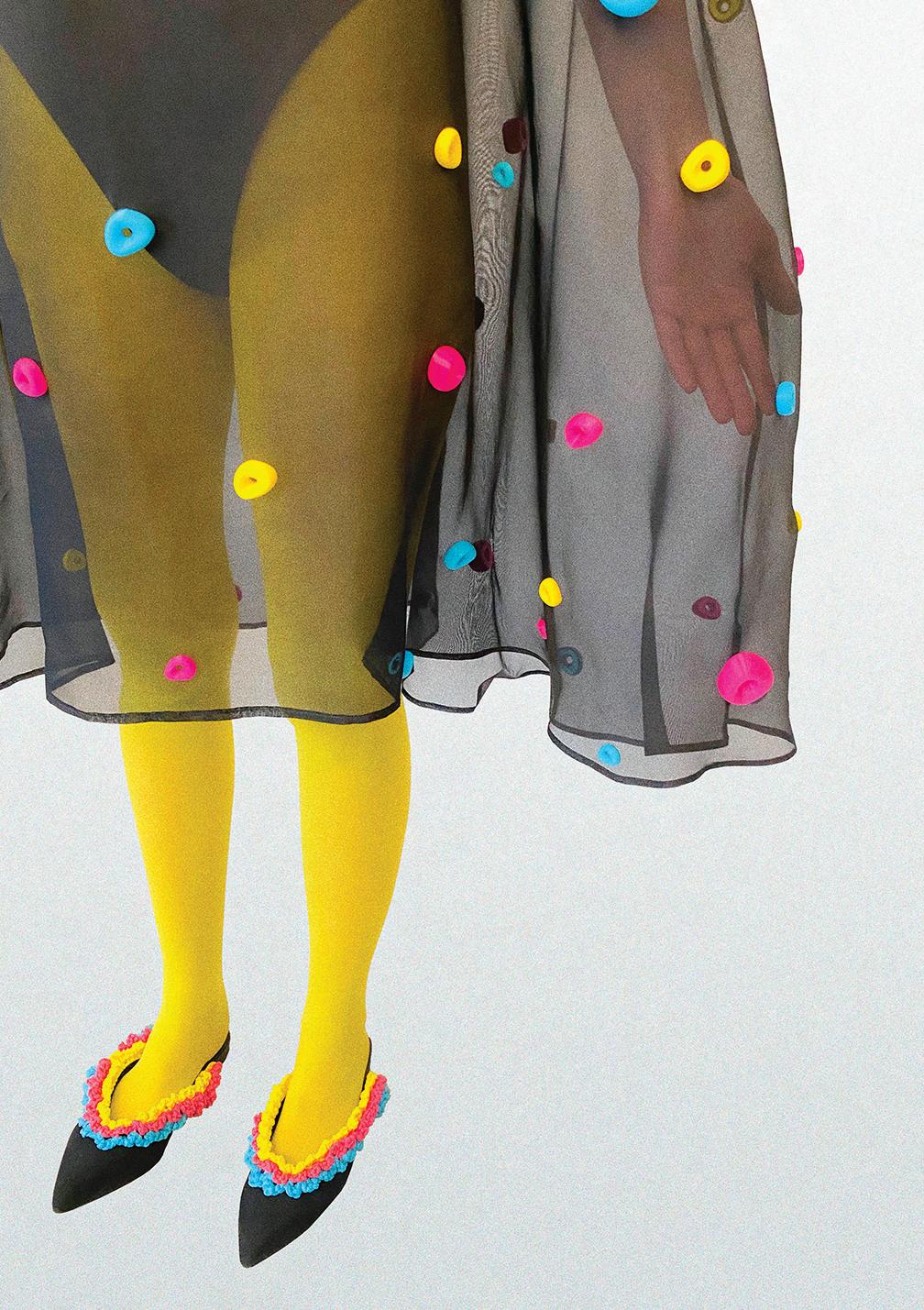
K n i t w e a r
1 year
The author took part in a week-long course on experimental knitwear in which she was asked to design two outfits from scratch. The course drew inspiration from previously made knitwear samples, as well as the minimalist aesthetic and avant-garde approach of Japanese fashion. The author was particularly interested in exploring the possibilities of combining hand and machine knitting to create unique and varied textures. By combining different techniques, the author was able to create outfits that blended the warmth and texture of hand knitting with the precision and efficiency of machine knitting. The resulting garments are captivating in their minimalism and depth and show the author's skill and sensitivity. The course was a valuable experience for the author, opening up new perspectives on the possibilities of knitwear in contemporary fashion.
Tutor: Ragne Kikas 2019 MA









/ 2






/ 2
Digital collection MEKE
This digitally created fashion collection is a beautiful tribute to the author's late grandmother, combining nostalgia and modernity in a unique and innovative way. The collection was created using a variety of 3D modeling software that allowed the author to bring her vision to life with unparalleled precision and creativity.
The garments in this collection are inspired by the work clothes of Soviet-era factory workers, a nod to the author's grandmother's work in a meat factory at the time. The clean, utilitarian lines and rugged construction of the workwear result in a contemporary esthetic that is both bold and functional.
In addition to her grandmother's work clothes, the author was also drew inspiration from her grandmother's only surviving garment, a kimono robe. This garment served as the basis for the collection with bold colors and intricate patterns that capture the beauty and grace of traditional Japanese textiles.
Throughout the collection, the author's artistic vision is reflected in the use of bright colors and eye-catching patterns. Each garment is a testament to the author's skill and creativity, using digital design techniques used to give traditional clothing styles a modern twist.
The result is a unique collection that is a testament to both the past and the present. The author's digital design techniques, combined with her grandmother's heritage, have produced a fashion collection that is both timeless and innovative. This collection is a beautiful tribute to the author's grandmother and a testament to the power of art and creativity to transcend time and place.
JEROMANS 2021
















/ 1

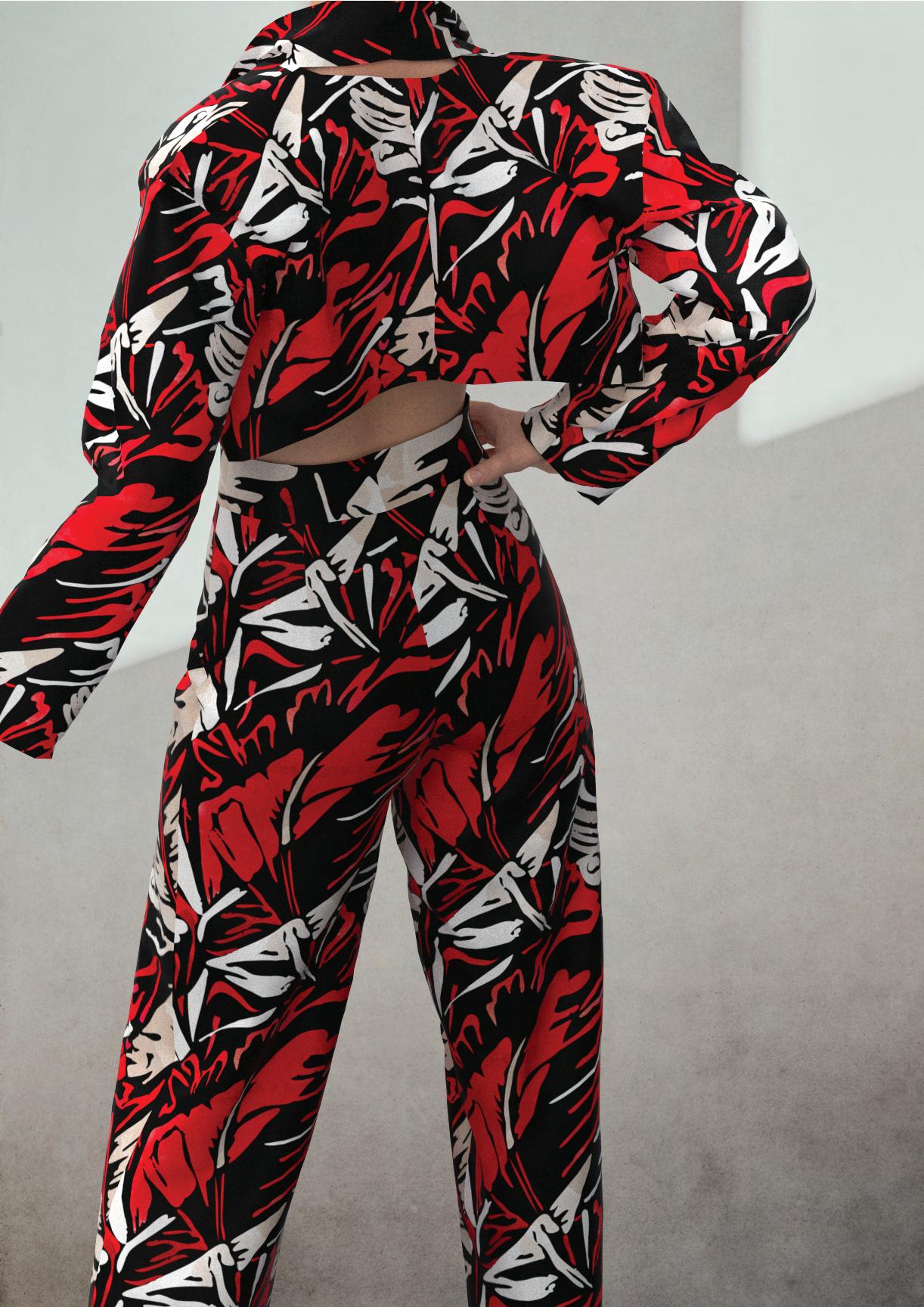
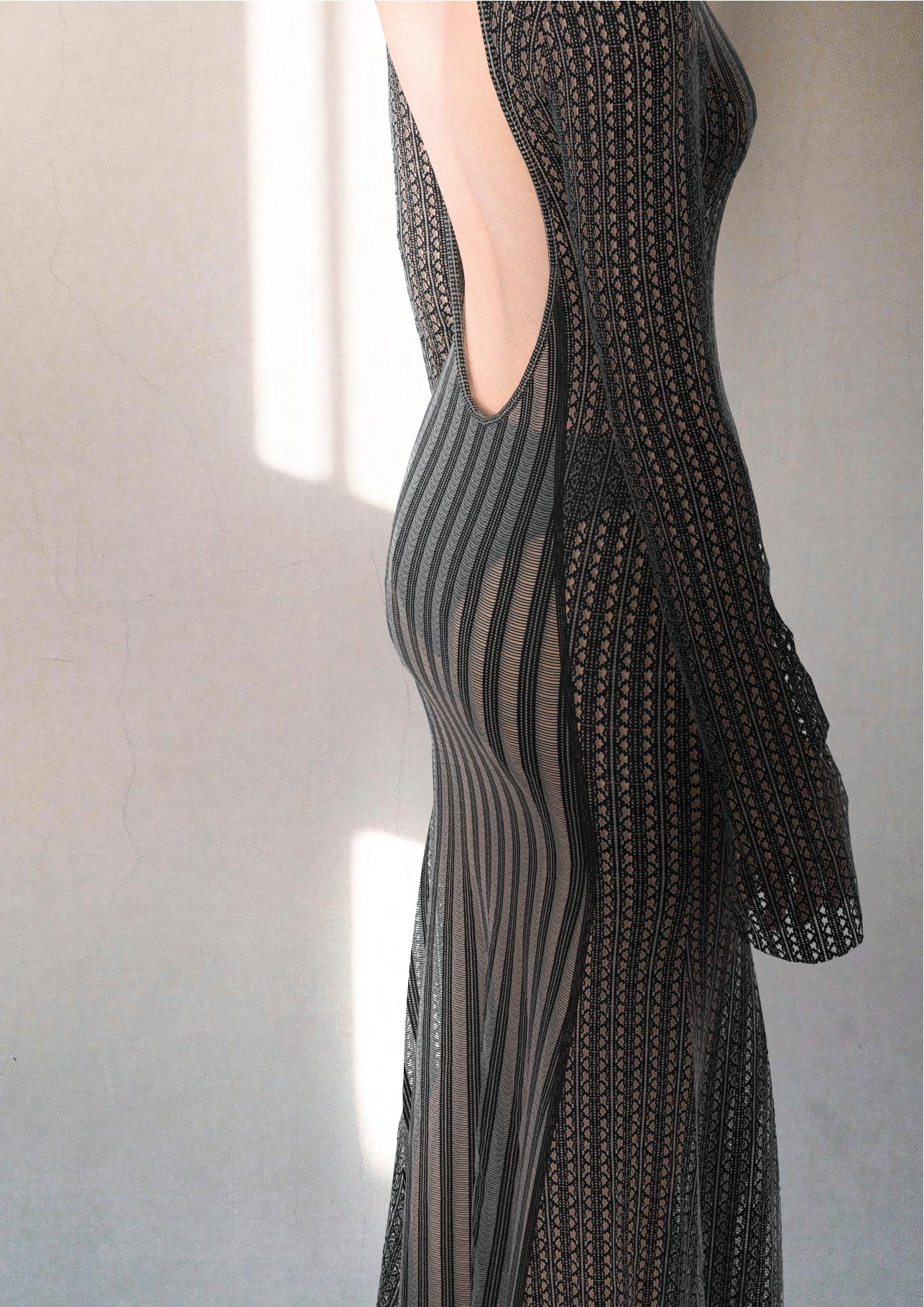





H e a d w e a r
Tutor: Eia Radosavljevic
2020
MA 2 year
When the author signed up for a week-long couture course, she was offered the opportunity to immerse herself in the intricate and timeless art of millinery. During the workshop, she was given the task of designing a hat shape from scratch, which the author then used to make two exquisite hats from wool felt, using a range of traditional millinery skills and tools.
Inspired by the texture and deformation of the skin, she wanted to design a hat shape that reflected the essence of the most tactile organ of the human body. By carefully modelling the shape with great attention to detail, the author finally arrived at a design that reflected the contours of wrinkled skin.
Once the foundation was laid, the course encouraged the author to expand her collection and she gladly accepted the challenge. As she continued to research and experiment, the author was drawn to the possibilities of 3D printing. With a 3D pen and the hat shape she had designed at the beginning of the course, the author set out to create a collection of avant-garde 3D printed hats.
The course proved to be a transformative experience that honed her craft and allowed her to hone her skills by trying out a range of techniques. In the end, my collection of hats, created in a week of rigorous and practical training, was a testament to the potential and beauty of the art of millinery.



/ 4

















/ 4



K u u k e n e
The genesis of "The Moon" collection can be traced back to the exquisite traditional costumes of Estonia and, in particular, a charming embroidered bonnet from the northern region. A striking feature that runs through all the pieces in the collection is the embroidery inspired by the bonnet found in the historic Heimtali manor. The cuts of the Mulk tailcoat and the North Estonian blouses with wide sleeves served as inspiration for the design of the collection. Each garment in the collection is carefully handcrafted from pure wool, giving the collection an unparalleled level of authenticity.
The whimsical name of the collection is partly an homage to a fable from Seto folklore that tells the story of the dark spots on the moon. It tells of a young man who longed to slumber in a hayloft with his beloved, but their amorous intentions were thwarted by the bright glow of the moon. It was believed that the moon had the power to bind the hearts of those who took offence to its brilliance, and to fuse their souls together for eternity. The enchanting tale serves as a fitting inspiration for this ethereal collection, giving it a dreamlike quality that will captivate any viewer.
Tutor: Piret Puppart 2016 BA 2 year






/ 5












/ 5




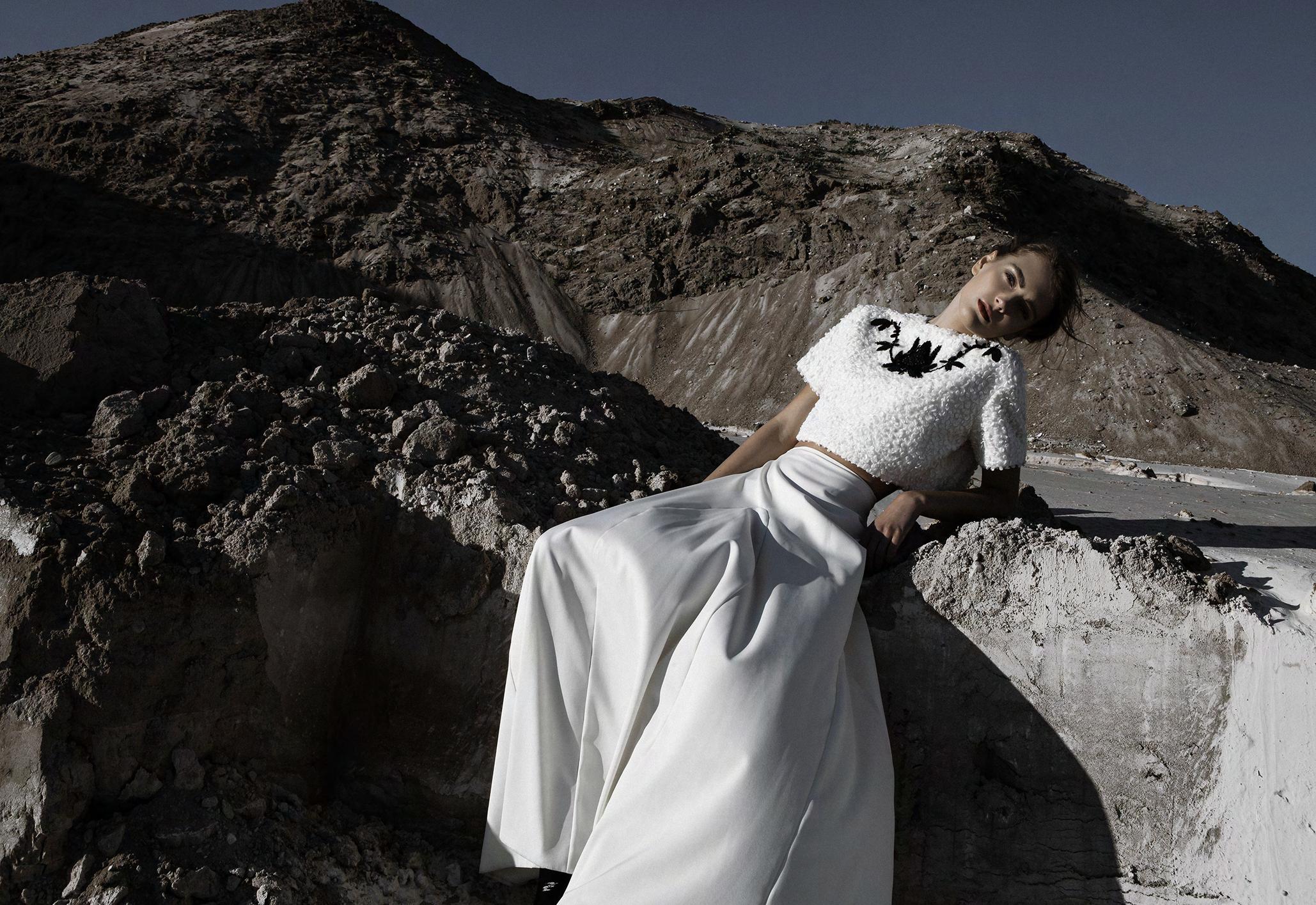

L e a t h e r g l o v e
2018 MA 1 year


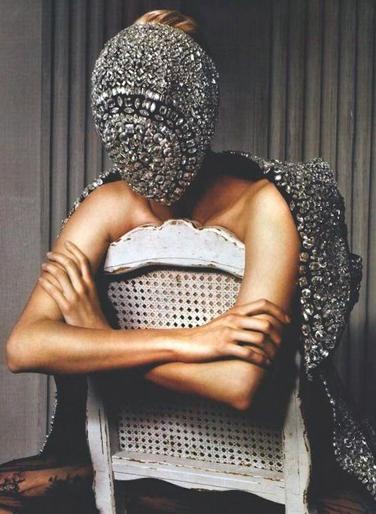

/ 6












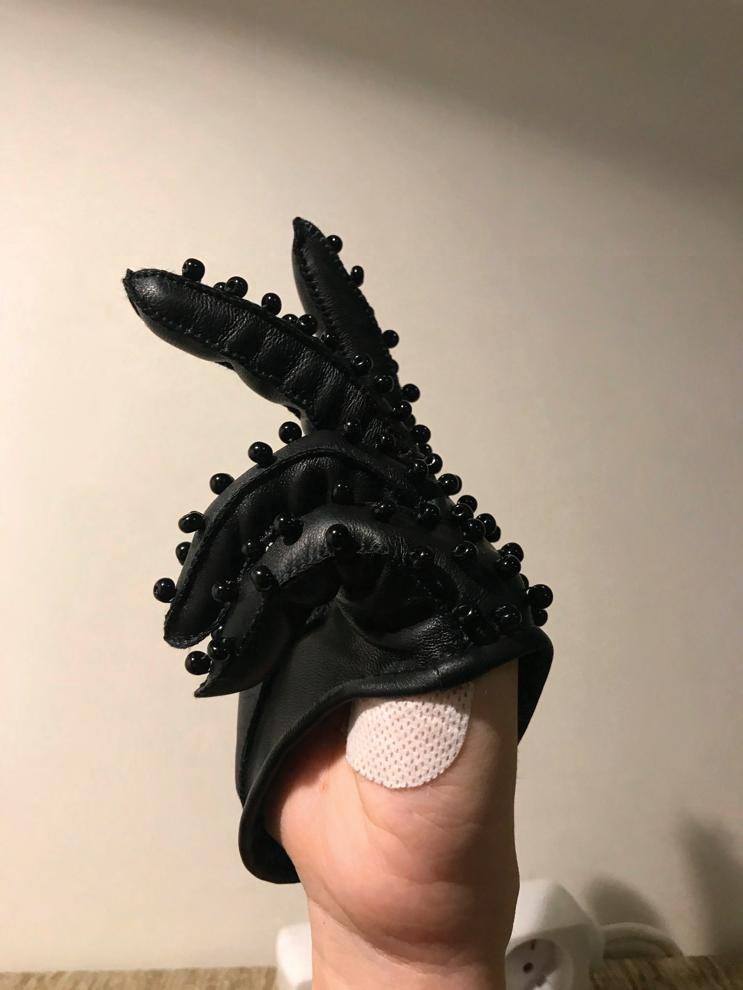
/ 6
IN T E R L A C E
The "Interlace" collection was inspired by the lm "Woman in Gold" directed by Simon Curtis. The lm's enchanting story about the recovery of Gustav Klimt's portrait "Adele Bloch-Bauer", which was lost for decades, touched author deeply. The injustice in icted on Jewish families during the World War II, who were forced to give up their art collections and possessions in order to buy their freedom from the Nazis, inspired me to explore this topic further.
The Nazis' plan to build the largest art museum in history, the "Fuehrer Museum", led them to forcibly collect art from all over Europe, including from families of Jewish origin who owned large art collections. The painting "Adele Bloch-Bauer" by Gustav Klimt was one of these paintings in these collections and has a historical antecedent.
Against the background of the World War II, the collection was inspired by women and their style in the 1940s. The symbiosis between strong and delicate women was fascinating to author. The main goal was to convey how these women left their homes and belongings behind in search of a better future. To portray this in clothing, author looked at the fabrics and cuts of 1940s nightwear. She also looked at the parallels between now and then and realised that the two eras are not so di erent. The interweaving of di erent details in the collection cast shadows on the stolen paintings and included elements from Gustav Klimt's painting.
One of authors main goals was to enhance her pieces with di erent craft techniques. Since Klimt's painting plays an important role in this story, she decided to embroider it onto her collection pieces, giveing is more modern twist.
Tutor: Piret Puppart 2017 BA
3 year

/ 7



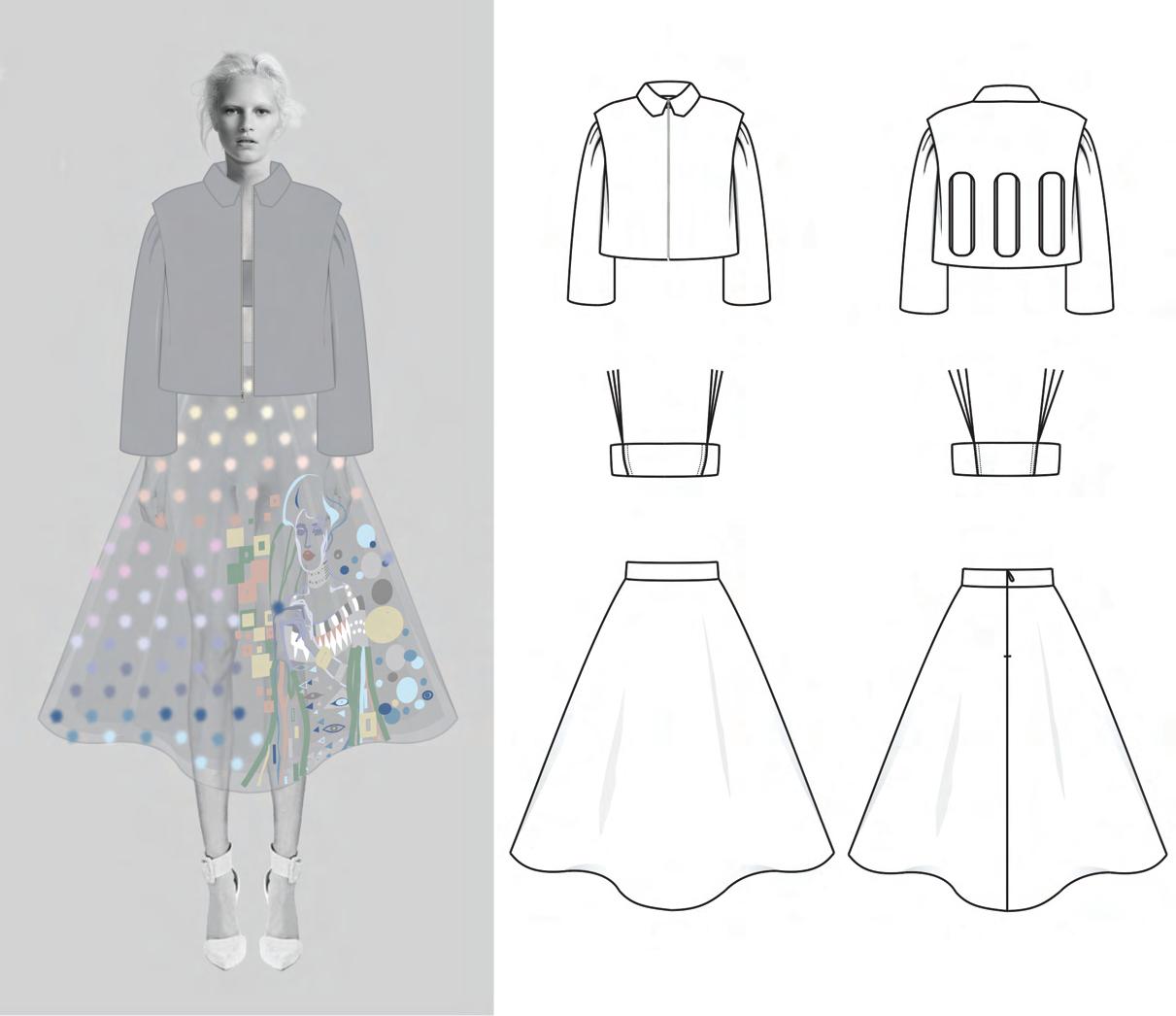






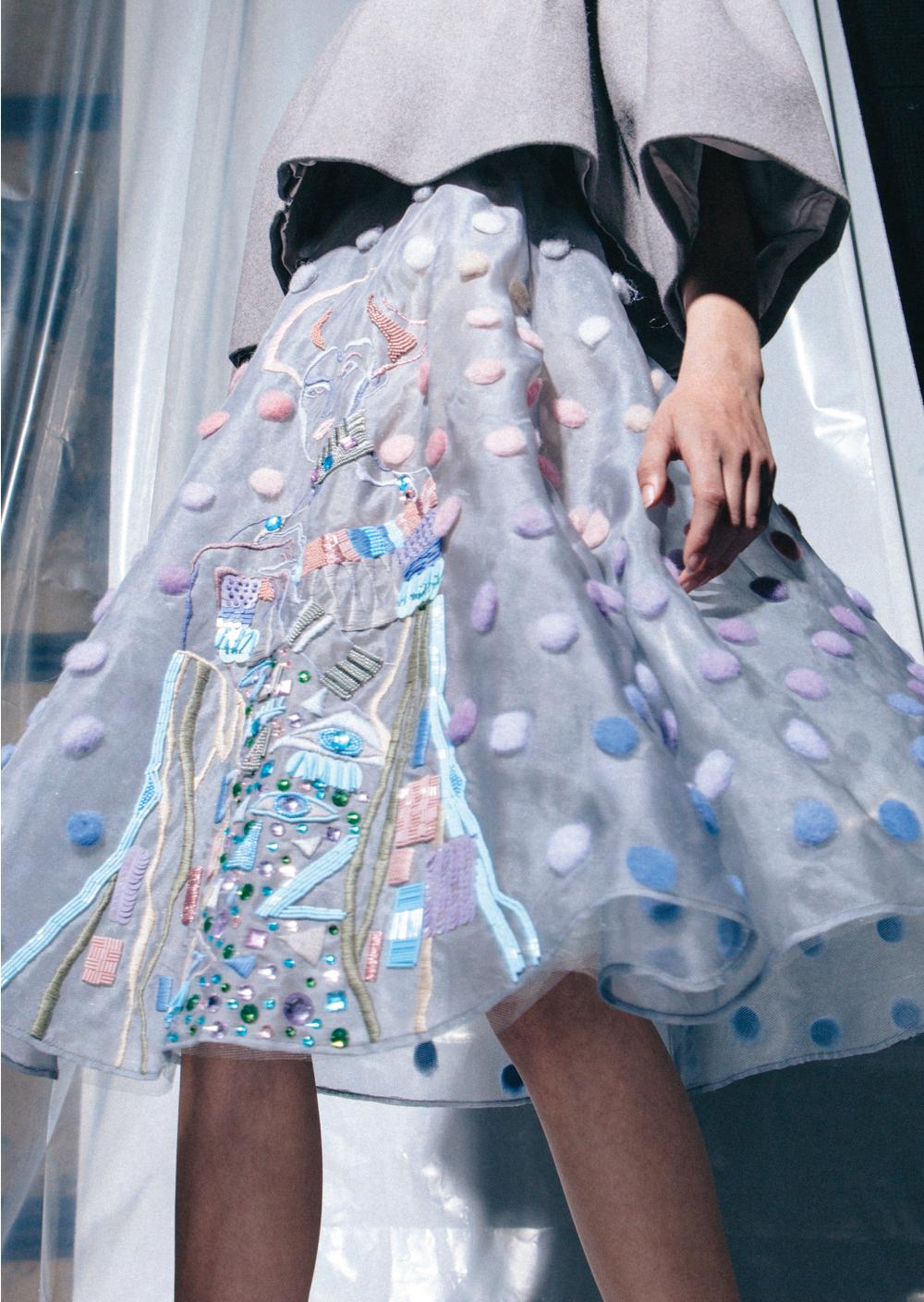
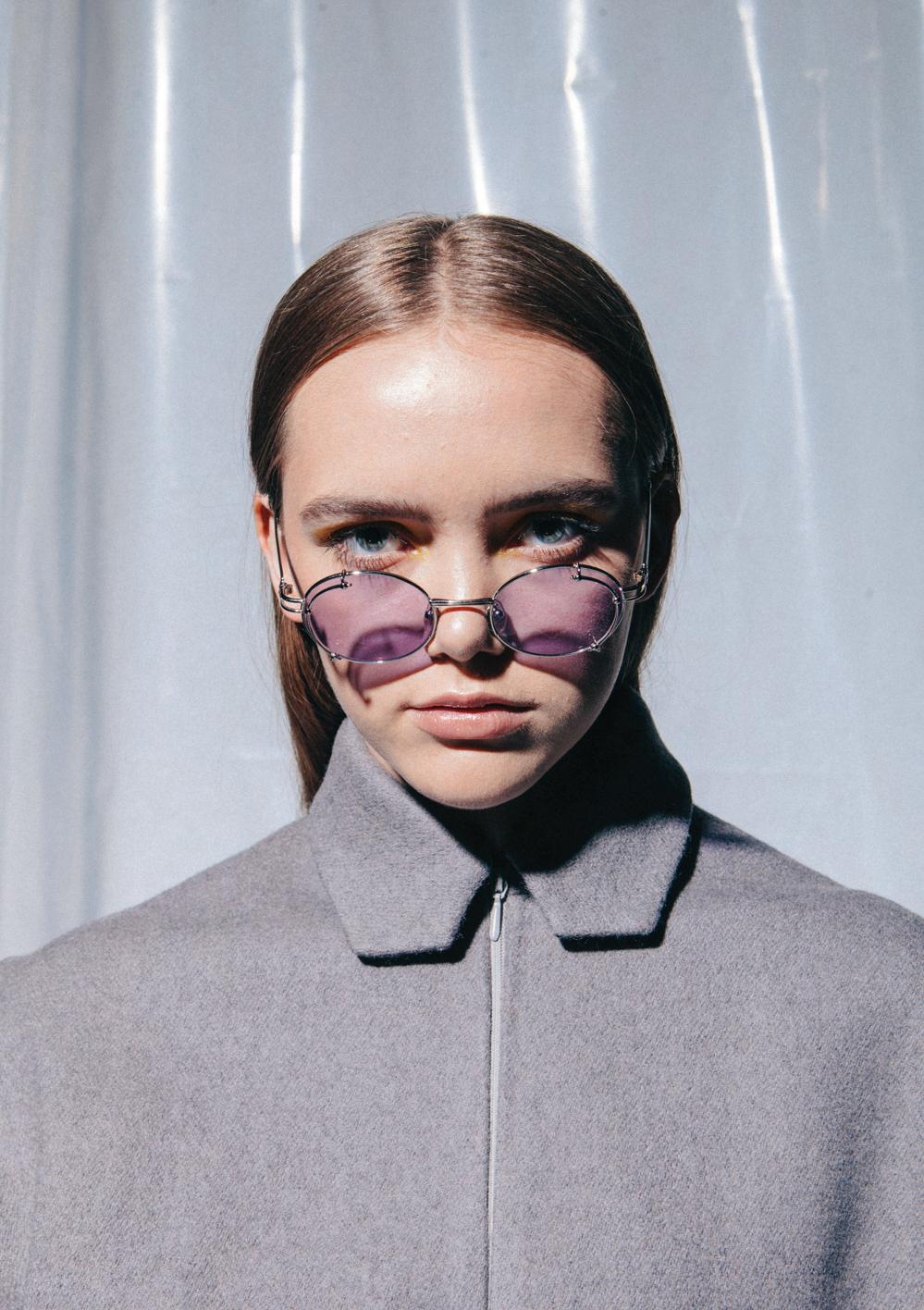

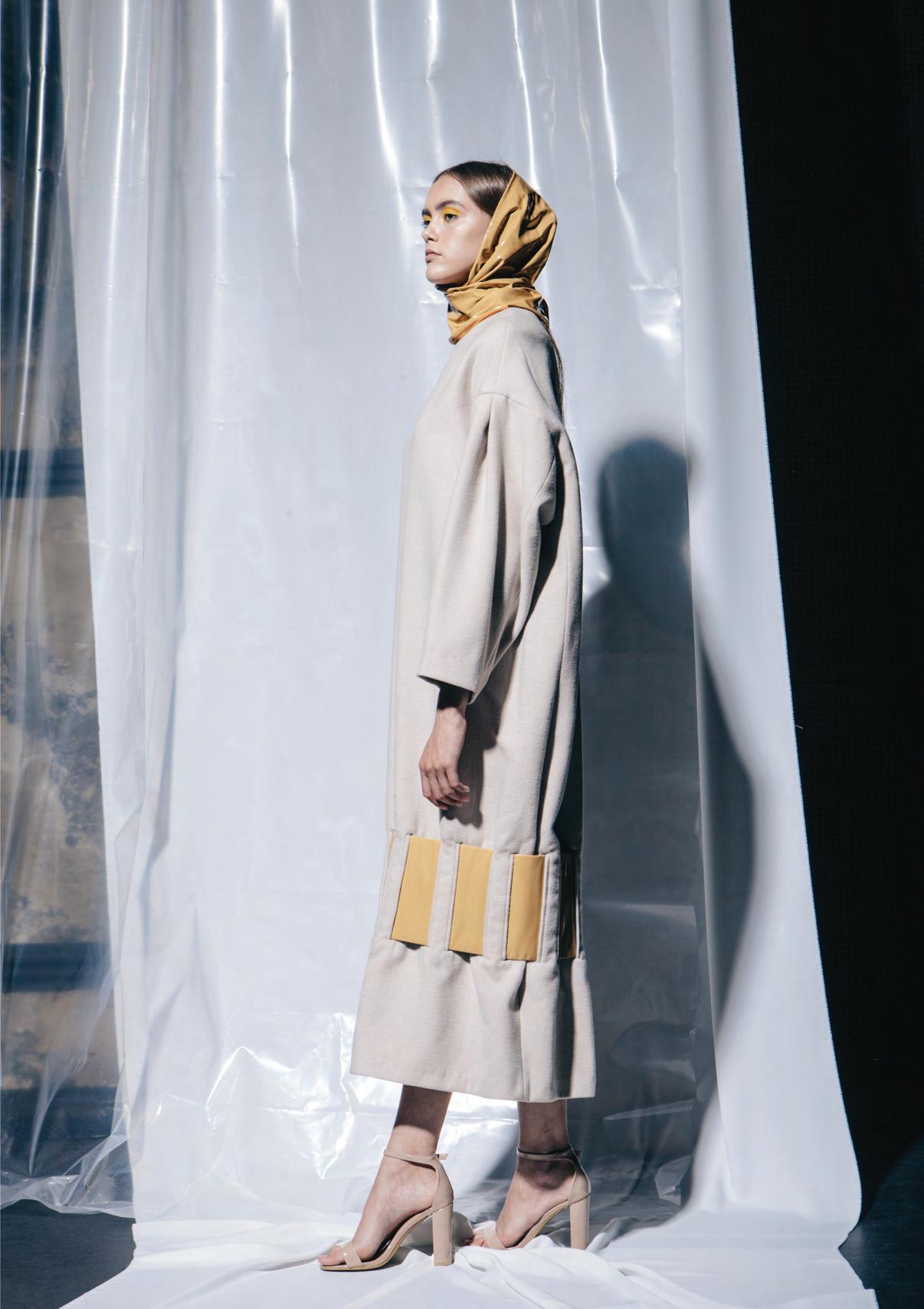




I
l l u s t r a t i o n s


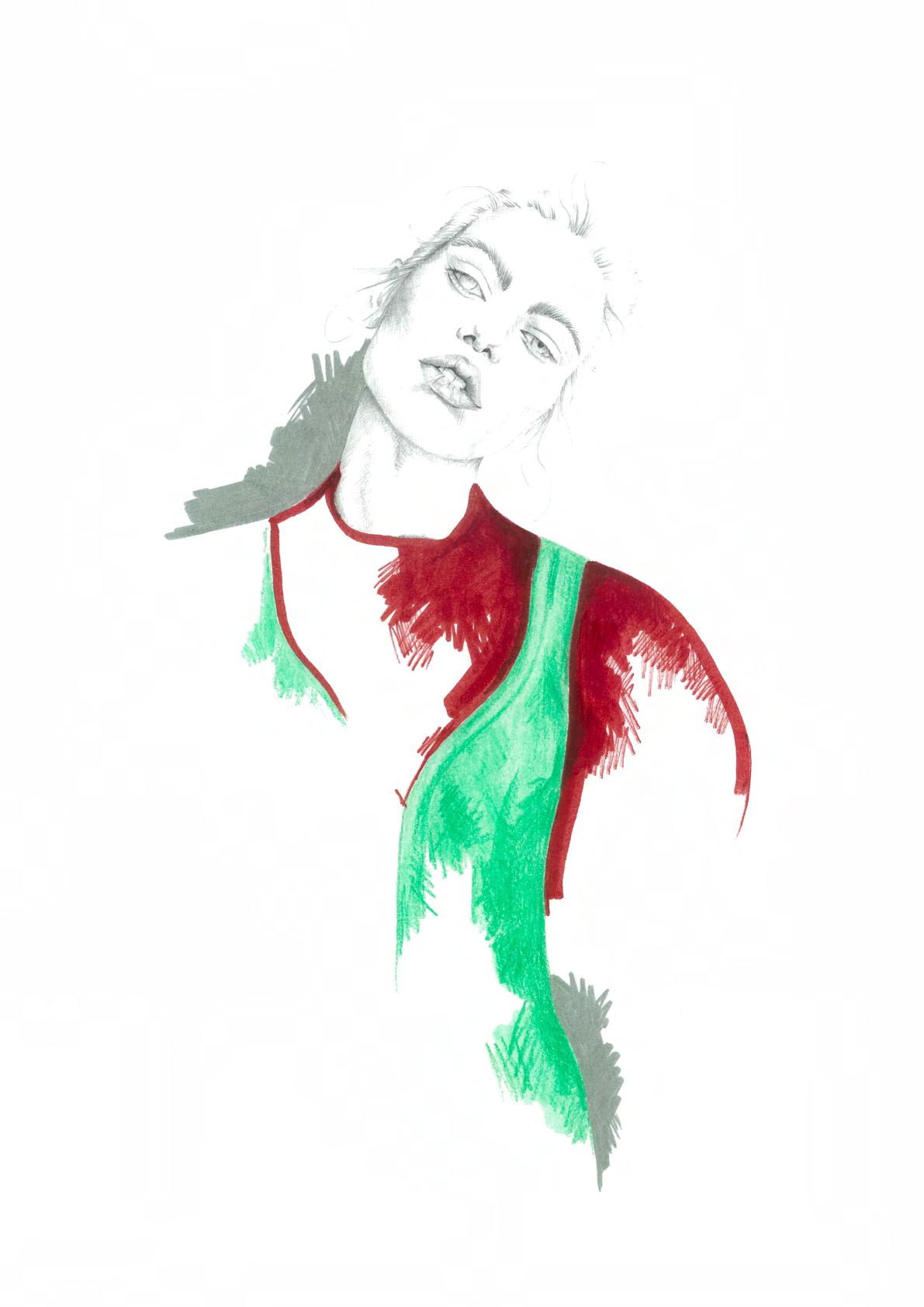



P e r s o n a l i n f o r m a t i o n
K r i s t i i n a J e r o m a n s
0 4 . 0 2 . 1 9 9 4 k r i s t i i n a j e r o m a n s @ g m a i l . c o m
5 8 5 4 6 4 4 0
E d u c a t i o n
2 0 0 1 - 2 0 1 0 A r u k ü l a El e m e n t a r y S c h o o l
2 0 1 0 - 2 0 1 3 K a d r i o r u G e r m a n H i g h Sc h o o l
2 0 1 4 - 2 0 1 8 E s t o n i a n A c a d e m y o f A r t s , F a s h i on D e s i g n B A
2 0 1 8 - . . . E s t o n i a n A c a d e m y o f A r t s , F a s h i on D e s i g n M A
W o r k e x p e r i e n c e
2 0 1 7 - 2 0 1 8 R E B E L L I O N A I R E S - J u n i o r d e s i g n e r
2 0 1 7 - . . . E e s t i K u n s t i a k a d e e m i a - G u e s t l e c t u r e r (Fashion illustration)
2 0 2 0 - . . . M y B r e d e n - He a d o f d e s i g n
P r a c t i c e
2 0 1 6 B a l t i k a G r o u p
2 0 1 6 E r a s m u s + O c h e B o u t i q u e ( V i e t n a m ) I n d u s tr i a l p r a c t i c e (T u t o r: X e n i a J o o s t )
2 0 1 9 A r u n a C l o t h i n g ( I n d i a ) C i r c u l a r e c o n o m y p r a c t i c e (T u t o r: R e e t A u s , H a r r i M o o r a )
T e c h n i c a l s k i l l s
A d o b e I l l u s t r a t o r
A d o b e P h o t o s h o p
C l o 3 D
R h i n o 3 D
K a l e d o S t y l e
K a l e d o P r i n t
C o r e l
L a n g u a g e s
E s t o n i a n
E n g l i s h







































































































